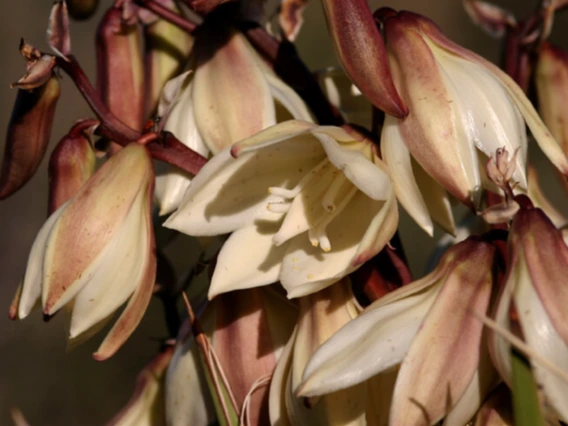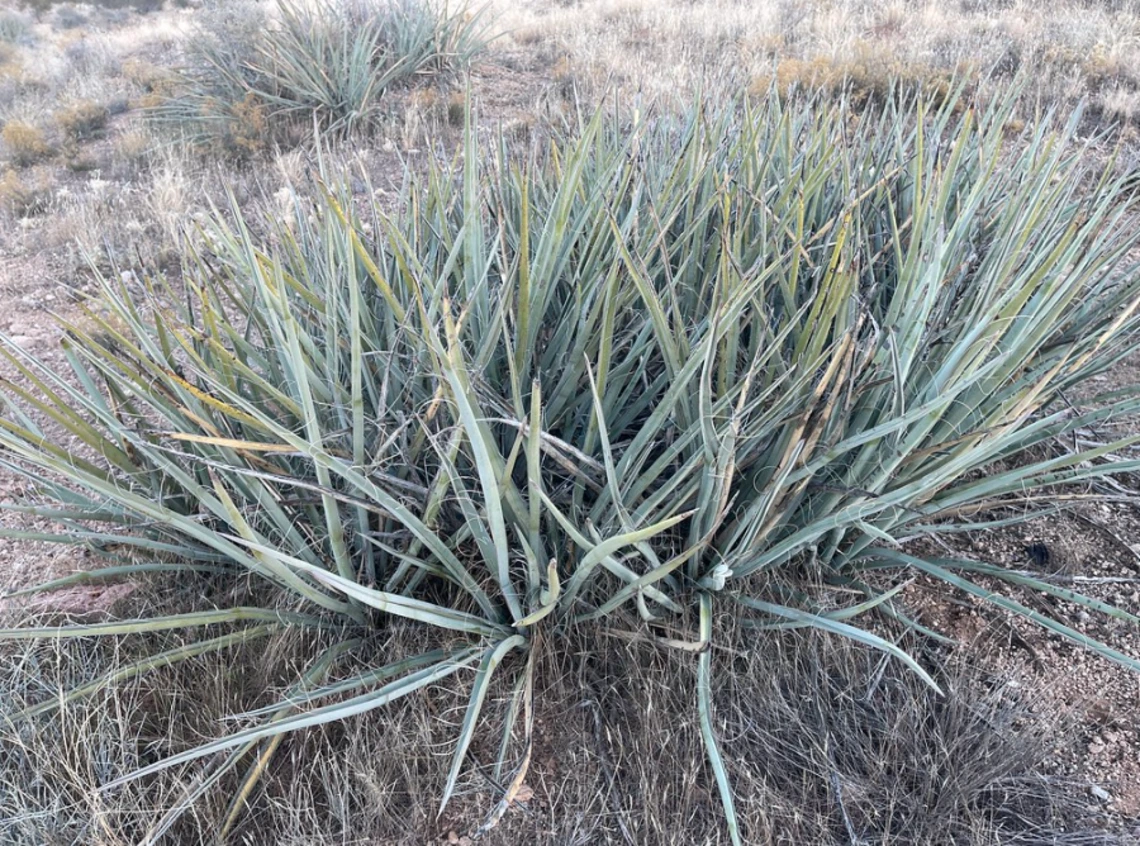Family: Asparagaceae
Compound: Yuc bac
Synonyms: None
Geographic Origin: southwestern US, northern MX
Characteristics: An evergreen shrub with long, sword-shaped leaves that are blue-green in color and radiate from rosettes. The leaves can reach 71cm (28in) in length, and are roughly 6.35cm (2.25in) wide. Leaf margins are brown and coarse with fibers, and have sharply pointed tips. Rosettes emerge from a woody caudex which is usually difficult to see. Usually stemless but can sometimes grow in a small bundle of decumbent stems. During early spring and summer, a dense cluster of white, succulent flowers will grow upwards from the center of each rosette, reaching up to 61 (2ft) tall. After pollination, short, green, fleshy fruits begin to develop. Large individuals of this species have been recorded at just over 2.4m (8ft) in height.
Natural History: grows between 915-2438m (3,000-8,000ft) in flats, on bajadas, and slopes in varius soils. Forms dense clumps of spiny leaves which provide shelter for wildlife. Flowers are visited by countless pollinators and fruit are eaten by wildlife.
Cultivation Notes: Banana yucca is very cold-hardy and drought tolerant, making it a great addition to native gardens especially in colder regions. Once established, no additional water is required, though it may help the plant maintain a healthy appearance. For optimal growth, it should be planted in coarse, well-drained soils, with full sun exposure. Banana yucca can be propagated from seeds, germinating best in 15-21C (60-70F), and can also grow from rhizomes, stem cuttings, and offsets from established plants.
For general plant propagation information, click here
Ethnobotany: Many Native American Tribes have utilized banana yucca. The succulent, vaguely banana-shaped fruit was a traditional food, often pit-roasted or pounded to a pulp and made into flat cakes. The fibers of the leaves were used to make sandals, baskets, nets, and hair brushes; and the roots are known to be used to make soap. This species of plant listed as "salvage restricted" and "harvest restricted" under the Arizona Native Plant Law, meaning that permits from the Arizona Department of Agriculture are required to remove the plant, as well as cut and remove the plant's wood, fibers, or by-products.
Citations:
Mielke, Judy. Native Plants for Southwestern Landscapes. University of Texas Press, 1993.
Flora of North America. Retrieved Oct. 22, 2018
USDA, Fire Effects Information System. Retrieved Oct. 22, 2018
USDA, Forest Service. Retrieved Oct. 22, 2018
SEINet Arizona – New Mexico Chapter. Retrieved June 21, 2024.





